India Air Show: The United States and Russia compete for orders and develop their own "loyal wingman" to show their ambitions.
The Indian military research institute exhibited a self-developed full-scale model of the "loyal wingman" stealth drone at this air show, which reflected the ambition of the Indian aviation industry.
On February 3rd, Bangalore Aerospace Exhibition (India Air Show) was held at Yelahanka Air Force Base. Indian Defense Minister Rajnath Singh attended the opening ceremony.
Although the epidemic in India is still raging, the United States and Russia have sent a large lineup of exhibitors for the potential large orders of the Indian Air Force, and they have all produced a variety of advanced fighters. This year’s air show attracted more than 600 exhibitors, including 78 foreign exhibitors. It is worth mentioning that the US bomber B-1B flew from South Dakota for 26 hours and arrived at the air show in Bangalore, India. Accompanied by an LCA fighter of the Indian Air Force, it passed the field at low altitude.

Warrior UAV adopts stealth design, and its shape is very similar to that of American Valkyria and Loyal Wingman.
For huge orders, the United States and Russia showed advanced fighters regardless of the epidemic.
According to the "India Times" reported on February 3, at the opening ceremony of the air show that day, The representative of the United States said at the press conference that Washington suggested that the Indian Air Force purchase American fighters, and the optional models include F-18, F-15 and F-16 (the United States later gave the specific number F-21).
The representative of the United States said that it is possible that the United States will produce American fighters in India as part of the "Made in India" plan. The representative of the United States also said that India is an important defense partner of Washington and the two sides will continue to cooperate to strengthen security in the Asia-Pacific region. The representative also said that Washington knew about India’s purchase of Russian-made S-400 air defense missile system and had asked India to abandon the deal, but the United States would consider this issue separately.
In June 2017, during the Paris Air Show in France, Lockheed Martin, an American military enterprise, announced that it had signed an agreement with India’s Tata Group to produce the F-16 Block70 in India at the Paris Air Show. India and the United States signed an agreement with a total value of over 10 billion US dollars, which became a heavy news during the air show and triggered a heated discussion. However, due to technology transfer, funds and other issues, the plan for the United States and India to jointly produce the improved F-16 has not yet landed. India plans to buy 114 multi-role fighters, with a budget allocation of about $17 billion. Several rounds of bidding have been conducted, but there has been no result. American F-16, Russian MIG -35, French Gust and Swedish Gryphon all participated in the bidding.
In recent years, the defense relationship between the United States and India has been deepening. Not only have high-level joint military exercises been conducted frequently, but the United States has also sold more and more advanced weapons to India. In the past 12 years, the United States has provided India with more than $18 billion in weapons and equipment, mainly including P-8 anti-submarine patrol aircraft, C-17 large transport aircraft, MH-60 anti-submarine helicopter, AH-64 armed helicopter and large-caliber artillery. At present, the United States has become the second largest exporter of weapons to India after Russia. According to the data at the end of 2018, Russia accounts for about 65% of India’s arms imports, the United States accounts for about 15%, and Israel accounts for about 11%.
F-16 is the third-generation fighter with the largest number of production in the world, and it is still in production today. With the expansion of the stealth fighter in the United States, the demand for the third-generation fighter is gradually decreasing. Transferring the F-16 production line to India can further extract the surplus value of the fighter and earn more money, and further deepen the defense cooperation between the two countries.
In addition to the F-16, the United States also actively promoted the F/A-18 carrier-based fighter to India. In August last year, the US F/A-18 carrier-based fighter successfully carried out the ground takeoff test, which proved to India that the aircraft can take off in the Indian Navy. At present, India has an aircraft carrier "Vikla Matia", and the aircraft carrier "Viklandt" is scheduled to enter the train next year. Both aircraft carriers take off in a skid mode, and the carrier aircraft is a Russian MIG -29. India has purchased 45 MIG-29s in total, but the performance of the aircraft is not good after being equipped in India, and the intact rate is less than 50%. So far, six MIG-29s have crashed. In this regard, the Indian Navy can be said to be "suffering", and the performance of domestic LCA carrier aircraft cannot meet the demand, and MIG-29s can only make do with it. Now, with the deepening of the defense relationship between the United States and India, the choice of carrier aircraft has increased by one.
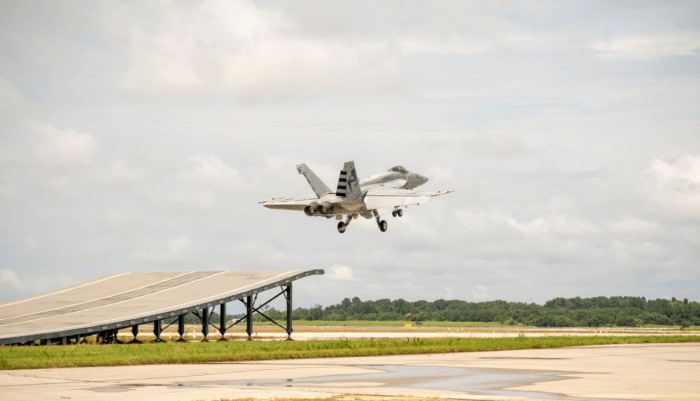
The F/A-18 carrier-based fighter successfully carried out the ground takeoff test.
As India’s largest supplier of weapons, Russia also sent a core lineup to participate in this air show. Among them, the full-scale model of Su -57E fighter made its debut at the Indian Air Show.
Su -57 is the latest fifth-generation multi-role fighter developed by Russia. The fighter adopts stealth design and composite materials, and its weapons will include hypersonic missiles. The Su -57 prototype made its first flight in 2010, and the first mass production machine was delivered to the army in December 2020. Russia decided to purchase 76 Su-57s and equip three aviation regiments before 2027. Su -57E is the export model of Su -57, which made its debut at the Moscow Air Show in 2019. Its target customers include several Russian traditional fighter sales customers such as India, Vietnam, Indonesia and Algeria.
Victor Kladov, director of international cooperation and regional policy of Russian National Technology Group, said on February 1st that many foreign customers showed great interest in Russian foreign trade weapon Su -57E fifth-generation fighter. "This fighter has aroused great interest in many countries because of its unique combat performance and flight characteristics," Kladov said.
India has reached an agreement with Russia to jointly manufacture FGFA fighters based on Su -57 fighters. In 2007, India and Russia agreed to jointly manufacture FGFA fighters, and signed a cooperation agreement in 2010. In 2018, a senior Indian Defense Ministry official revealed that India will withdraw from the FGFA cooperation project that started 11 years ago. It is said that the FGFA project ended because the two sides have differences in research and development costs and technical capabilities.
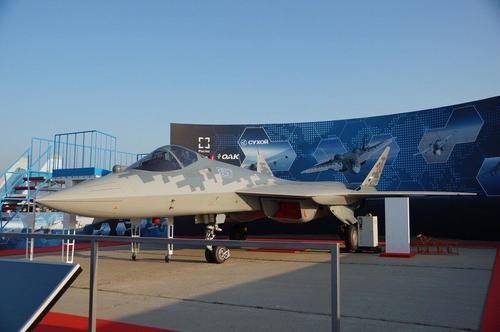
Full-scale model of Su -57E fighter.
FGFA is actually an export version of Su -57, but some changes have been made according to the needs of India. At present, the fifth-generation aircraft that India is expected to acquire are only Russian products, the American F-22 is not for sale, and the F-35 has not been exported to India. Moreover, there are many orders for the F-35 from project partners and American allies. Even if the export is agreed, it is unlikely that India will equip the F-35 in the next few years.
Despite the twists and turns, the Su -57 was officially delivered to the troops last year, which is of great significance to this project. With the increase of stealth fighters in India’s neighboring countries, India is likely to buy Su -57 fighters again.
In addition, the close defense cooperation between India and Russia is also an important reason why India chose Su -57. More than 70% of the weapons of the Indian armed forces are Soviet-Russian products, and Russian equipment accounts for 80% of Indian combat aircraft, including Su -30MKI, MIG -29 multi-function fighter and Mi -17 military transport helicopter. Since India put forward the "Made in India" plan in 2014, Russia and India have implemented more than 200 joint projects under this framework.
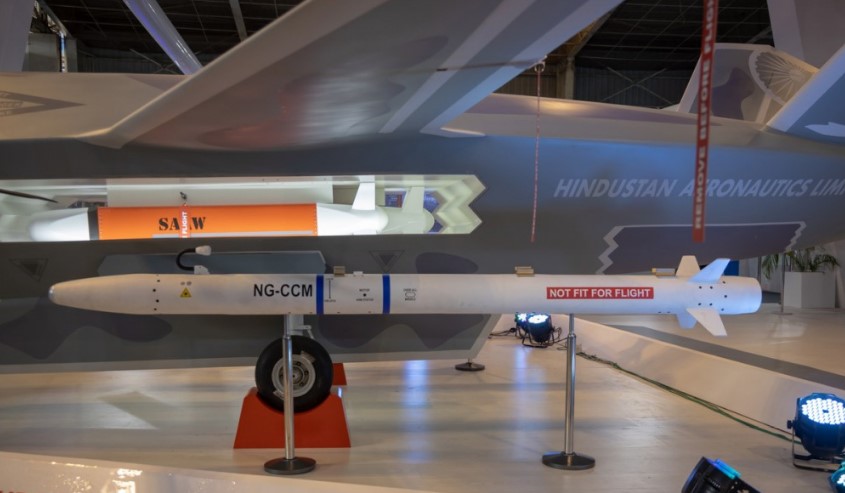
India’s NG-CCM new generation fighting bomb displayed with Warrior UAV.
Following the military frontier technology, the Indian version of "loyal wingman" appeared.
In recent years, the UAV named "loyal wingman" has become a popular equipment in the field of UAV development. The concept of "loyal wingman" was first put forward by the United States in 2015. Subsequently, Russia, Australia, Britain and other countries also launched their own versions of "loyal wingman" drones.
Literally, the "loyal wingman" UAV mainly plays the role of wingman, has autonomous combat capability, can effectively integrate with manned fighters, complete coordinated operations, and improve operational efficiency. The specific operational roles of the "loyal wingman" drone are: acting as a weapon launching platform and launching attacks on targets designated by manned pilots; Strike the target set perceived by the drone; Attract anti-aircraft fire for manned aircraft and destroy threatening targets; Implement anti-interference outside the area; As an information fusion node of ISR.
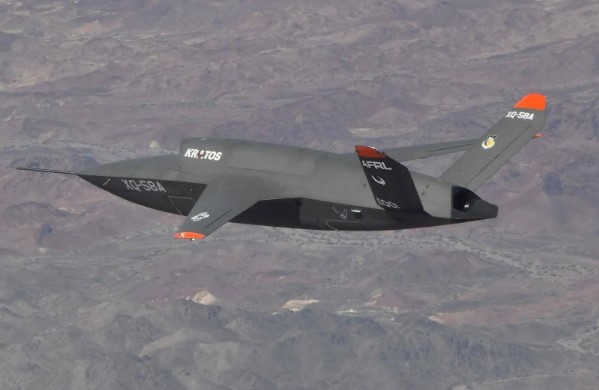
Valkyria UAV developed by the US Air Force.
There are three main types of "loyal wingman" drones: one is modified from manned fighters; The other is a newly developed UAV. Some high-end UAVs generally adopt stealth design, and some low-end UAVs adopt non-stealth design. The "loyal wingman" drone sacrifices itself when necessary to ensure the safety of manned aircraft, so it is also fully considered in terms of cost and belongs to a product that can be quickly consumed. The "loyal wingman" who cooperates with the fifth-generation aircraft generally adopts stealth design, such as the American XQ-58A and the Russian "Grom".
The XQ-58A "Valkyria" UAV prototype completed its first flight in March 2019. It was jointly developed by the US Air Force Research Laboratory and Karatos UAV Systems Company, with a length of 9.14 meters and an internal bomb bay capable of carrying 272 kilograms of payload. It was mainly designed to cooperate with F-22, F-35 and other manned stealth fighters. The "Grom" UAV designed by Kronstadt Company of Russia was announced for the first time at the 6th International Military and Technical Forum held in August 2020. Airborne weapons, including laser-guided bombs, TV-guided bombs and air-to-ground missiles, were also displayed with the UAV. From the appearance, the stealth UAV is similar to the American XQ-58A UAV, both of which adopt a diamond nose and a backpack inlet.
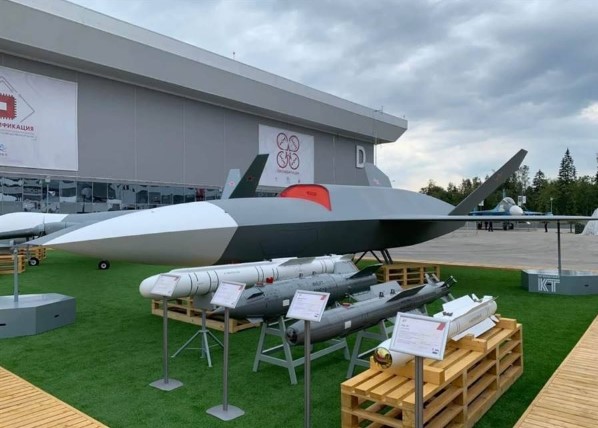
The "Grom" UAV can carry a variety of precision guided munitions.
At this air show, the Indian military industrial organization also demonstrated the Indian version of the "Loyalty Wingman" drone. Hindustan Aviation Co., Ltd. (HAL) first demonstrated the full-scale Warrior UAV model. The aircraft was developed within the framework of AMCA battle plan, which has been implemented for about five years. In addition, India’s Defense Research and Development Organization (DRDO) and Aviation Development Agency (ADA) launched the dual-engine carrier aircraft (TEDBF) program.
From the appearance, the UAV is very similar to Boeing’s "loyal wingman". It adopts stealth design, the inlet is located above the fuselage, the cross section of the fuselage is irregular and polygonal, and the tail nozzle is stealth-treated, which can greatly weaken the radar reflection signal and infrared characteristics. The power system consists of two small turbojet or turbofan engines, which can ensure the UAV to fly at high subsonic speed.
In the vision of the Indian military industry organization, Warrior UAV can cooperate with the domestic AMCA fifth-generation fighter to keep up with the transformation of the combat style of the world-class air force. However, it is one thing to make a model, and it is one thing to really develop a reliable real machine. In the past, Indian military institutions often showed various advanced fighter models at air shows, but few of them were really developed successfully. AMCA’s fifth-generation fighter model has appeared for nearly 10 years, but the project has not been officially launched so far.